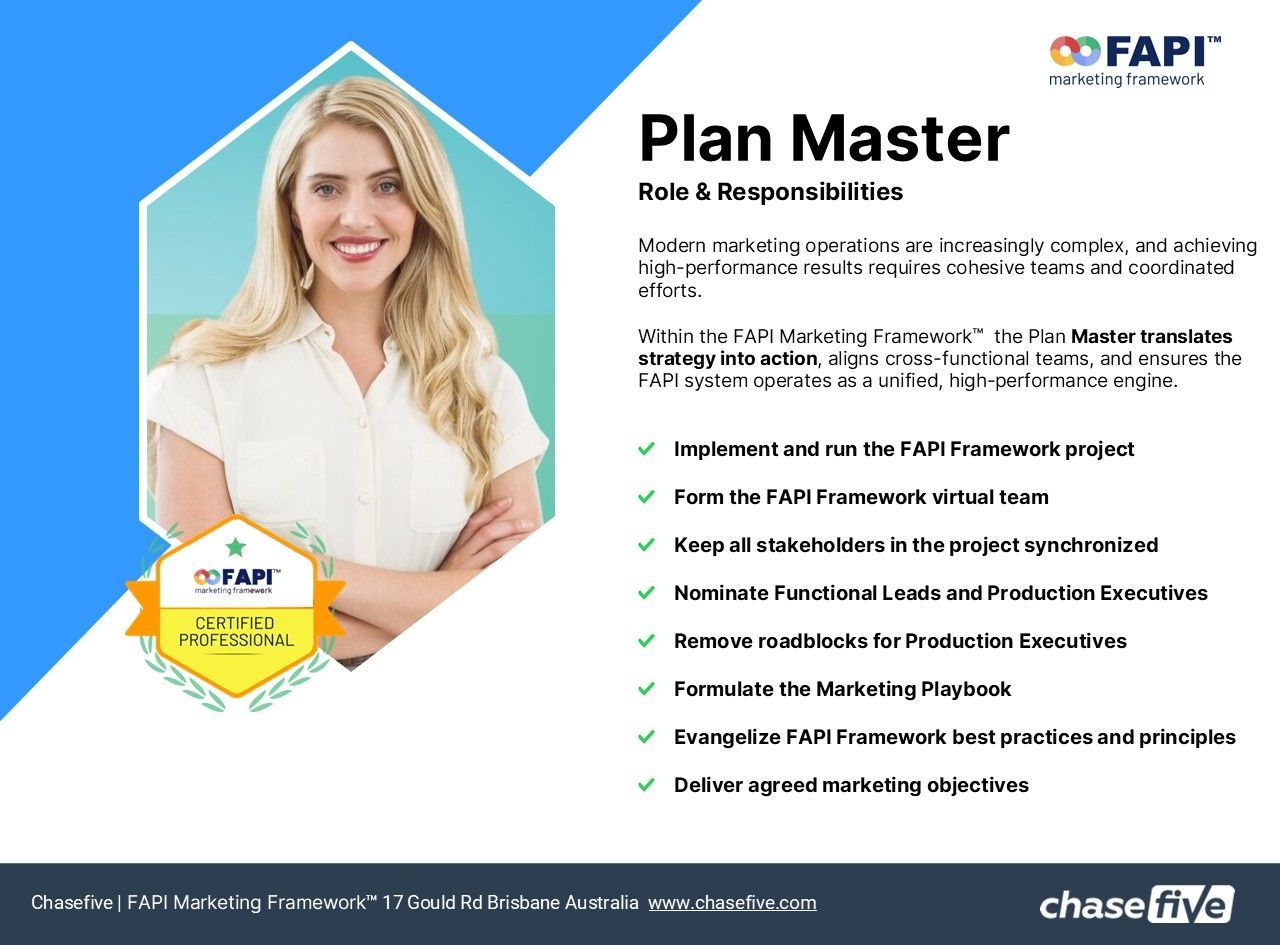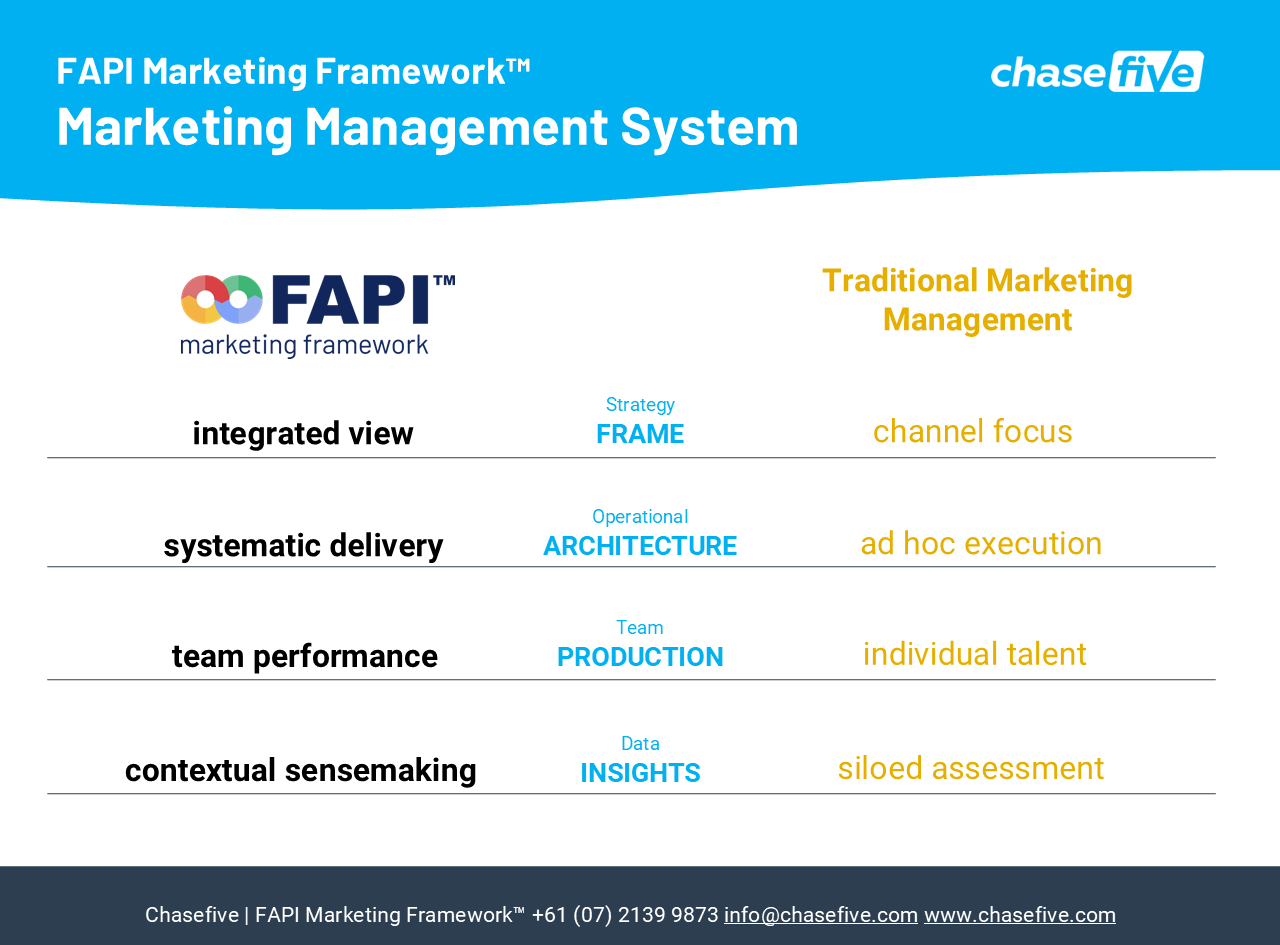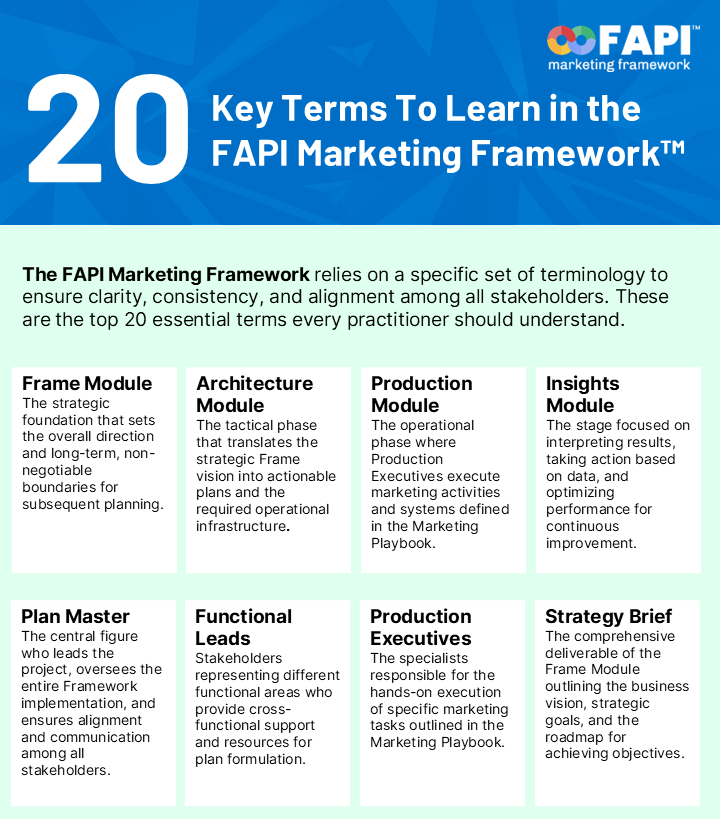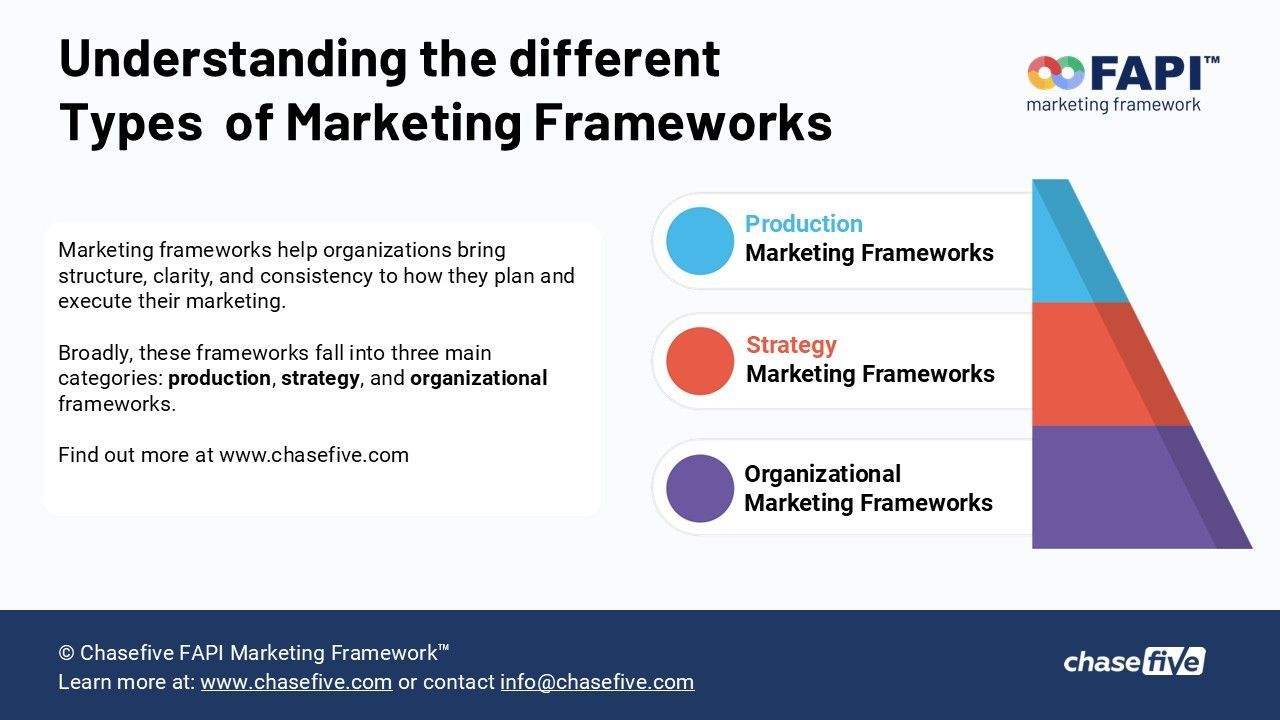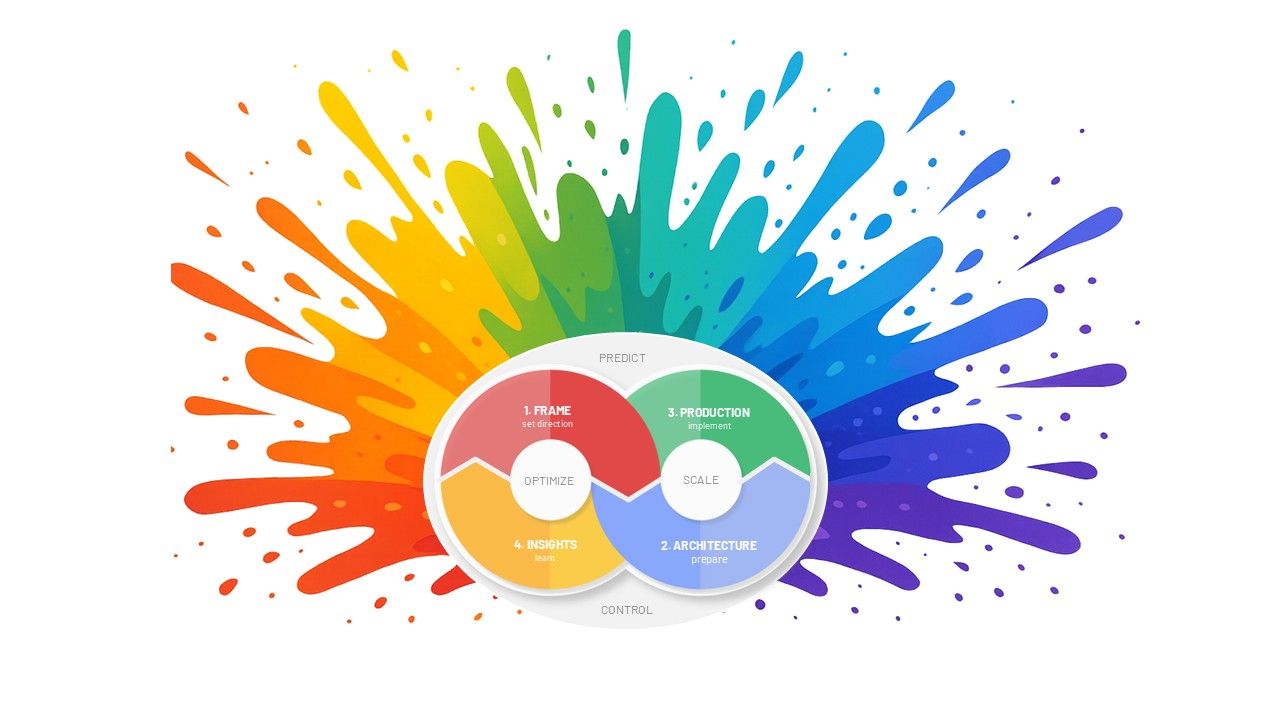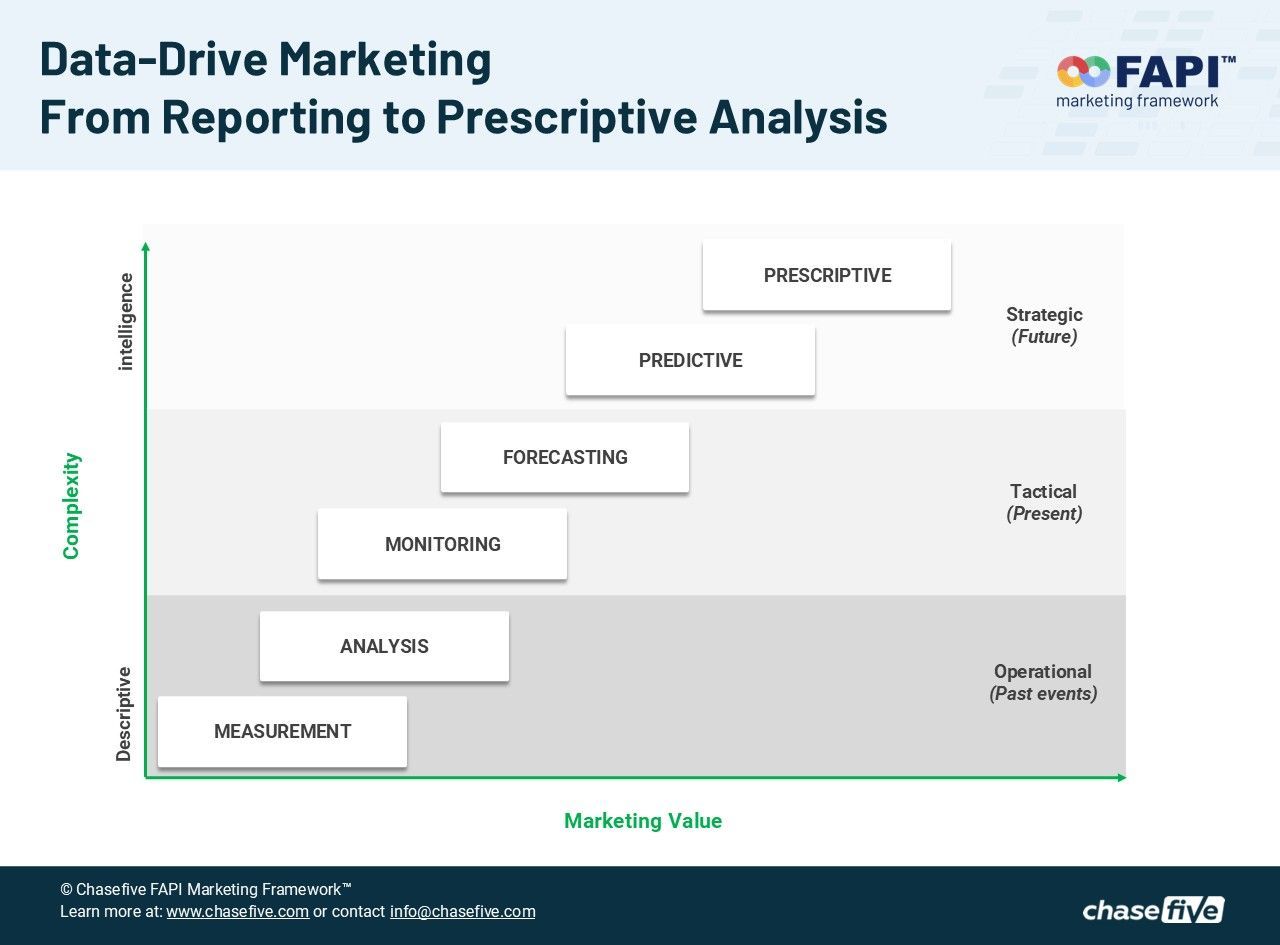The Plan Master. The Central Force Behind High-Performance Marketing Management
n high-performance marketing organisations, success doesn't happen by accident—it is engineered. The FAPI Marketing Framework™ codifies this principle by defining clear roles, structures, and processes that transform strategic intent into measurable marketing outcomes. At the core of this system sits a pivotal leadership role: the Plan Master.
Often misunderstood as a mere project manager or senior marketer, the Plan Master is, in reality, the marketing operational architect, strategic interpreter, cross-functional conductor, and insights-driven decision maker behind the entire FAPI program. They are the "glue" that holds together the four modules of the FAPI Framework—Frame, Architecture, Production, and Insights—and ensure that strategy and execution flow as one continuous system.
This article explains what makes the Plan Master role so central to marketing performance, why it exists, and how it elevates a business’s marketing capability far beyond traditional marketing management.
How the Plan Master Operates Across All Four FAPI Marketing Modules
The Plan Master is the only role that spans the entire framework. Their responsibilities shift and expand as the organisation moves through Frame → Architecture → Production → Insights.
1. FRAME MODULE: Vision Decoder / Encoder
At this stage, the Plan Master ensures:
- Commercial objectives, competitive analysis, and audience definitions are complete and correct
- The senior leadership’s strategic direction is accurately captured in the framework
- All stakeholders understand and agree upon the strategic foundations before any planning begins
The output of the Frame is strategic clarity—owned, maintained, and enforced by the Plan Master.
2. ARCHITECTURE MODULE: Operational Architect & Designer
Key responsibilities include:
- Designing the operational Architecture for the marketing function
- Coordinating and producing the Marketing Playbook
- Defining the tactical marketing model appropriate for the organisation
- Overseeing financial management and ensuring a strong Return on Marketing Investment (ROMI)
In this module, the Plan Master becomes the blueprint engineer—turning goals into workflows, budgets, and actionable plans.
3. PRODUCTION MODULE: Coach, Drummer, and Operational Leader
Once the plan is activated, the Plan Master shifts into execution mode:
- Leading kickoff meetings
- Supporting Production Executives
- Removing roadblocks and enabling the team to move faster
- Ensuring every task aligns with the Marketing Playbook
- Blending creativity with commercial discipline
They keep the rhythm of the system—the “drummer” ensuring pace, tempo, and consistency.
4. INSIGHTS MODULE: Master of Insights
The Plan Master also leads the measurement and optimisation engine:
- Establishing benchmarks and KPIs before execution begins
- Organizing data flows and reporting structures
- Interpreting results and turning them into improvements
- Driving continuous optimisation across all modules
Their role ensures that marketing does not operate on intuition, but on structured learning and measurable performance.
The Management Style That Defines a Plan Master
The Plan Master’s effectiveness is not based solely on technical skill. Their leadership style is just as crucial.
Servant Leadership
They empower teams, rather than command them. Their focus is on enabling others to perform at their best.
Diplomacy & Cross-Functional Influence
Because team members often do not report directly to the Plan Master, influence—not authority—is their greatest tool. They negotiate for resources, align competing priorities, and maintain organisational harmony.
Operational Decision-Making
When priorities change or unexpected issues arise, the Plan Master makes decisive, informed choices that protect both strategy and delivery.
Quality Control
They champion standards, enforce SOPs, and ensure marketing output is consistently high in quality.
Why the Plan Master Matters More Than Ever
Modern marketing is too fragmented—and too high stakes—to be run through ad-hoc coordination, siloed specialists, or disconnected teams. Without a central figure to harmonize strategy, architecture, execution, and insights, businesses experience:
- Misalignment between strategy and operations
- Inefficient spending
- Repetitive mistakes
- Slow execution
- Lack of accountability
- Weak performance measurement
The Plan Master eliminates these issues by creating a unified, structured, and continuously improving marketing operation.
